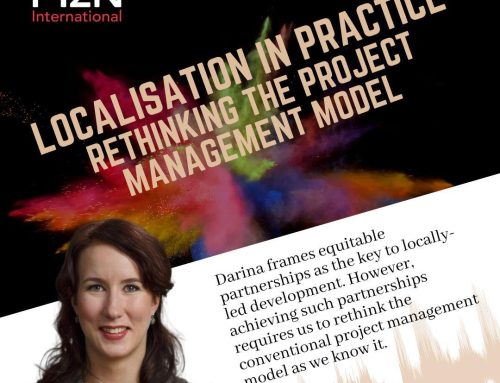Make sure your vision translates to your budget – and back
The success of any proposal relies heavily on two things – your vision and your plan to fulfil it. However, connecting these two elements can be the most challenging part. While a clear and audacious vision is inspiring and keeps the reader interested, it must be paired with a well-defined plan that outlines the costs of realizing this vision in order to make it actionable. A vision without this, is useless. And a vision with an incomplete plan is outright off-putting.
The core element of the detailed plan is the budget, in fact, it’s the second most crucial component of your entire proposal, after the narrative. Remember that a budget is not just a financial plan; it’s a tool that communicates with the donor and showcases your organization’s capabilities. In the best case, it connects to your vision. If your vision is inspiring, and your budget realistic and professional, your chances of success increase manifold. On the other hand, if your budget is unclear or mismanaged, it indicates that you are not adequately prepared to handle the program. It’s not enough to have a correct budget either. Only a perfect one, providing answers to all key questions without having them asked, is convincing.

Photo taken during MzN International's Write Winning Proposals training course in February 2024.
Crafting a budget that satisfies the donor’s requirements, while also ensuring financial sustainability and maximizing the unrestricted budget can be challenging. Here are some steps to get you off to a good start:
1. Do it now and together!
The worst budgets we have seen are those created at the end of a proposal writing process, by a finance person who has a limited understanding of the proposed project. Written often under time pressure with a looming deadline, the best the budget can hope for is being compliant with the donor format. It will likely not show your professionalism by not answering questions like “How will you react to changing conditions on the ground?” or “How will upcoming cost-saving opportunities be used?”. If you are aiming at locally led development, then a budget needs to be done together with said partner, at eye-to-eye level (not merely as an “empowered” subcontractor). Start early, do it together.
2. Make it unbeatable value
Donors are public bodies and as such accountable to what they do. Like others, they need to show that the most efficient proposal has been selected. A good proposal budget helps donors do just that. Identify the costs of not selecting this proposal and showcase the assets from other projects the donor has previously funded and can now capitalise on. Display your value-for-money calculations front and centre and also any of your own contributions. In short, present its value as unbeatable. That does NOT mean to reduce your unrestricted element!
3. Read the guidelines – and follow them
Our research has shown that a double-digit percentage of proposals submitted to the EU get struck down only because they don’t comply with regulations. “It’s really a shame – we like the project but cannot shortlist the paper when this happens”, a USAID procurement officer recently told us.
Remember when you are drafting your budget, it needs to comply with the donor’s guidelines. The first step is making sure you are familiar with the guidelines of the donor and the templates to be used for your proposal. Being able to comply with donor guidelines sends a key message to the donor. It shows you are well-read and pay attention to the rules of the process.
It doesn’t need to be difficult
Connecting your vision to your plan and budget is key to winning more funding from philanthropists and donors alike. Think of it as an investment pitch – that needs to have a target (your vision) and a clear path to it.
But this is not as hard as it sounds. A well-trained team with some practice can get into the habit of churning out great proposals that win more and more often. Join us for our in-person training on Getting Project Budgeting & Reporting Right.
After the course, you will know how to:
- Translate a budget’s vision to a financial plan that is coherent and professional.
- Maximise your unrestricted element from the start.
- Build a better proposal budgeting process at your organisation that translates this course insight into action.
- Write a winning budget in full compliance with the donor in a way that maximises your income and is financially sustainable.
- Manage and monitor a budget, including variances, utilization rates and create a forecast that allows you to manage a project with more foresight.
- Report financials effectively and in full compliance with donors and legislation.
- Feel confident reading and creating budgets. Take the fear out of finance.
Sign up now to make a bigger impact and position your organization for sustainable financial success. Sign up here.
Join us on the path to doing good, better
At MZN International, we believe in doing good – better. As a dedicated social consultancy firm, our priority is to help those who want to make a positive impact. With over 300 NGOs and IGOs as partners, we’re recognised for building efficient, agile non-profit organisations.




